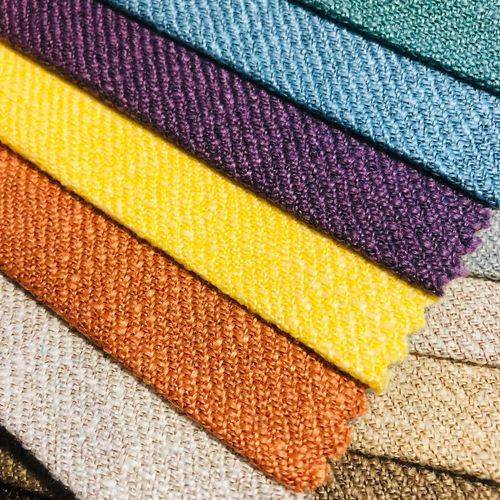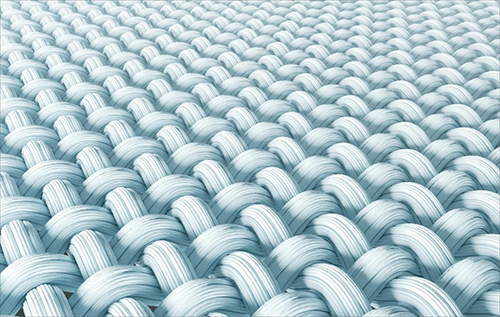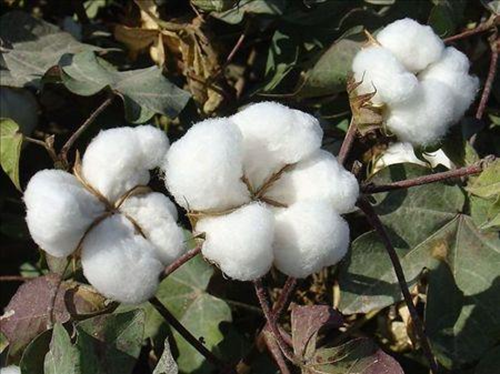Textile fabric is a professional discipline. As a fashion buyer, although we do not need to master the fabric knowledge as professionally as textile technicians, they need to have a certain knowledge of fabrics and be able to identify common fabrics, understand the advantages and disadvantages of these fabrics and applicable styles.
(1) Fabric composition: Fabric composition, including materials, hand feel, etc., determines that many attributes of fabrics are a content that customers must understand when buying products, so it is very important.
(2) Nursing characteristics: fabric care includes washing, maintenance, etc., which is a content that end users will be particularly concerned about. Sometimes customers give up buying the product because the care is too complex.
(3) Fabrics and knitwear: Due to the different weaving equipment and weaving methods, the textile fabrics for clothing have the following two basic categories:
① Fabric: by two or more groups of yarns to each other at right Angle, yarn longitudinal is called warp, yarn transverse back and forth is called weft. Because the fabric yarn intersects each other in a vertical way, the county has a solid, stable, and relatively low shrinkage rate.
② Knit thing: the structure of the yarn ring forms a needle ring, the new needle ring through the previous needle ring, so repeated, that is, the formation of the knitting thing.
(4) Fabric organization structure: The following are the three most basic original tissues of the fabric, also known as the basic organization. All the other organizations come from these three organizational changes.
① Flat organization: the warp of the flat tissue fabric floats and weft. The characteristic of flat organization is that the appearance effect of both sides of the fabric is the same, and the surface is flat, so it is called flat organization. The texture of plain fabric is firm, its disadvantage is to feel hard, the pattern is monotonous.
② Twill tissue: the tissue point of the twill tissue is a continuous tilt pattern. The characteristic of twill tissue fabric is that the fabric has the difference of front and negative, which is tight and thick than flat fabric, with better luster and soft feel. However, under the condition of the same thickness and density of warp ft, its firmness is less than that of flat tissue fabric.
③ Satin organization: Satin organization is the most complex of the three original tissues. The characteristic of satin tissue is: the fabric surface is smooth, full of luster, texture is soft, but compared with flat tissue fabric, twill fabric, easy to external friction and hair, and even damage. The grain organization is mainly used for formal dress products.
(5) Fabric weight: -generally with gram weight per square meter, refers to the weight of the fabric, is to indicate the thickness of the fabric index. As a buyer should understand the general common weight of spring and summer conventional fabrics (mainly knitted fabrics) and the common weight of autumn and winter conventional fabrics.
2. Classification of textile fibers
Textile fiber is mainly divided into natural fiber and chemical fiber.
(1) Natural fibers: refers to the textile fibers obtained from plants or animals. Contains plant fibers (cotton, hemp) and animal fibers (hair, silk).
(2) Chemical fiber: it is mainly divided into the following three categories:
① Recycled fiber: a fiber made from natural cellulose fiber. Rayon, rayon and faux hair are made by this process.
② Synthetic fiber: commonly used polyester, acrylic, nylon, polypropylene, chlorine fiber belongs to this category.
③ Inorganic fiber: silicate fiber, metal fiber namely belong to this category,
3. Common sense of common fabrics
The following are the main advantages and disadvantages of commonly used fabrics and the identification methods.
(1) Cotton:
① main features:
a. Strong moisture absorption.
b. Cotton cloth is very unstable to inorganic acids.
c. Long time exposure to sunlight and the atmosphere, cotton cloth can play a slow oxidation effect, strong reduction.
d. Microorganisms, mold and other cotton fabrics.
② major advantage:
A, the cloth surface has soft luster and soft feel.
(5) Fabric gram weight (Fabric weight): -generally with gram weight per square meter, refers to the weight of per square meter of the fabric, is to indicate the thickness of the fabric index. As a buyer should understand the general common weight of spring and summer conventional fabrics (mainly knitted fabrics) and the common weight of autumn and winter conventional fabrics.
2. Classification of textile fibers
Textile fiber is mainly divided into natural fiber and chemical fiber.
(1) Natural fibers: refers to the textile fibers obtained from plants or animals. Contains plant fibers (cotton, hemp) and animal fibers (hair, silk).
(2) Chemical fiber: it is mainly divided into the following three categories:
① Recycled fiber: a fiber made from natural cellulose fiber. Rayon, rayon and faux hair are made by this process.
② Synthetic fiber: commonly used polyester, acrylic, nylon, polypropylene, chlorine fiber belongs to this category.
③ Inorganic fiber: silicate fiber, metal fiber namely belong to this category,
3. Common sense of common fabrics
The following are the main advantages and disadvantages of commonly used fabrics and the identification methods.
(1) Cotton:
① main features:
a. Strong moisture absorption.
b. Cotton cloth is very unstable to inorganic acids.
c. Long time exposure to sunlight and the atmosphere, cotton cloth can play a slow oxidation effect, strong reduction.
d. Microorganisms, mold and other cotton fabrics.
② major advantage:
A, the cloth surface has soft luster and soft feel.
f. High temperature resistant, can be used for high temperature ironing.
⑥ Main blended components:
a. Scoy cotton: the cloth surface luster is soft and bright, bright color, smooth and smooth, soft feel, poor elasticity. After pinching the cloth with the hand, the obvious crease can be seen, and the crease is not easy to disappear.
B, polyester cotton: the luster is brighter than pure cotton cloth, smooth cloth surface, clean without yarn head or impurities. Feel smooth, crisp elasticity than pure cotton cloth. After pinching the cloth, the crease is not obvious, and easy to restore the original state.
Post time: May-14-2024









